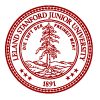OBSOLETE DOCUMENTATION: Studio D and E
[This obsolete documentation was moved to the archive in February 2022]
Current documentation:
https://ccrma.stanford.edu/docs/studios/Studio-D.html
https://ccrma.stanford.edu/docs/studios/Studio-E.html
Archived documentation
Studio's D and E are primarily designed for composition, mixing and mastering in a multi-channel sound field and are identical to each other with several important differences. They are also used occassionally for simple recording tasks and various research experiments, and are located in the Knoll Room 221 and 320 (behind the Classroom and Stage) respectively.
As with any of the Studio's please don't unplug or repatch any of the studio equipment. Also refrain from eating and drinking in the studios. Reserve the rooms with the CCRMA Room Booking System.
See the attached pdf files below for current studio operations and Quick Start Guides!
Monitor Level Calibration
The monitoring level is calibrated. With a standard signal and standard routing and levels you should get about the same SPL readings on all studios. For details on how and why to do this see this very good article:
https://www.soundonsound.com/sos/may14/articles/reference-monitoring.htm
Settings used for calibration as follows:
- pink noise output level in Digital Audio Workstation (Logic, Ardour, etc): 0dB in a K14 meter (-14 dB re: full scale)
- master level in DM1000: -10dB (blue reference lines)
- individual channel level in DM1000: -5dB
Calibration dates:
Studio E: March 24 2016Studio D:

